Discover solar battery prices and system specifications with our regularly updated solar batteries comparison table. See which energy storage system may be best for your home or business.
- Manufacturer Logo
- Product Image
- In Depth Analysis
- Australian Approvals
- Battery Type
- All In One Unit?
- Price excl. installation (Estimated Retail pricing in AUD incl. GST, unless stated otherwise)
- Nominal Storage
- Usable Storage Capacity
- Pros
- Cons
- Weight
- Power
- Dimensions (WHD)
- Round Trip Efficiency
- Off-grid Capable?
- Designed for indoor or outdoor installation? (IP rating)
- Operating temperature range
- Warranty
- Compatible with what hybrid inverter brands? (Non-All In One units only)
- AC or DC coupled? (All In One systems only)
- Total warranted kWh (1 cycle per day)
- Datasheet Supplied?
- Warranty Supplied?
- Cost per Total Warranted kWh (1 cycle per day)
- More information on brand
| Product Name |
ABB (Fimer) REACT 2 (4 kWh) |
Alpha-ESS Storion SMILE 5 – 5.5kWh |
Aoboet UHOME NCA |
BYD B Box Pro 13.8 |
Delta BX 6.0 | Dyness Powerbox | Enphase AC Battery | Eguana Evolve | GenZ 48V 3kWh | Growatt GBLI6531 |
Hansol AIO 10.8 |
Huawei Luna (5 kWh) |
LG Chem RESU 6.5 |
Opal Storage | PowerPlus Energy LiFe Premium Series | Pylontech US2000B | QCells Q.HOME | Redback SH5000 + BE13200 |
RedEarth Sunrise 6.5kWh |
Redflow Zcell | Senec.HOME V3 Hybrid | SimpliPhi PHI3.4 Smart-Tech battery | SolarWatt MyReserve Matrix |
SolaX Triple Power 4.5 |
Soltaro AIO2 5kW / 5kWh |
Sonnenbatterie Eco 9.43 | SunGrow SBP4K8 | Tesla Powerwall 2 | Trinabess Powercube | VARTA Pulse 6 | Zenaji Aeon |
|---|---|---|---|---|---|---|---|---|---|---|---|---|---|---|---|---|---|---|---|---|---|---|---|---|---|---|---|---|---|---|---|
| Manufacturer Logo |  |
 |
 |
 |
 |
 |
 |
 |
 |
 |
 |
 |
 |
 |
 |
 |
 |
 |
 |
 |
 |
 |
 |
 |
 |
 |
 |
 |
 |
 |
 |
| Product Image | 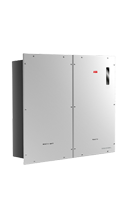 |
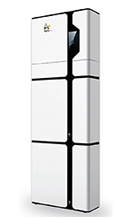 |
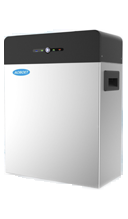 |
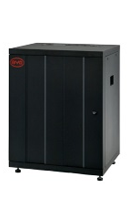 |
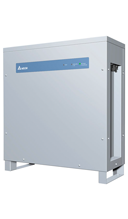 |
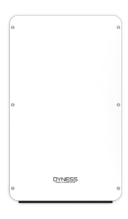 |
 |
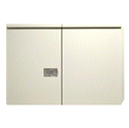 |
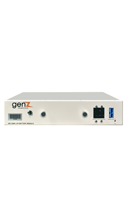 |
 |
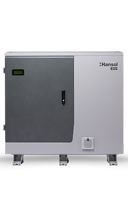 |
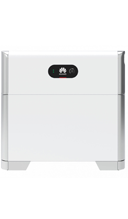 |
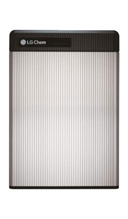 |
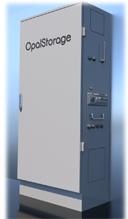 |
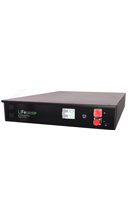 |
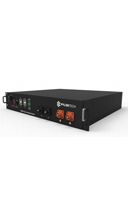 |
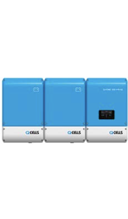 |
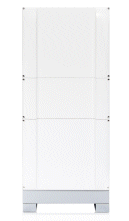 |
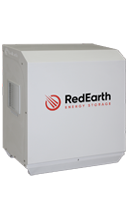 |
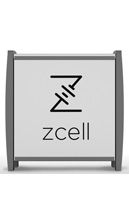 |
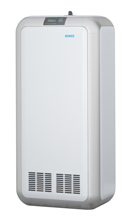 |
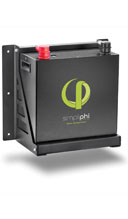 |
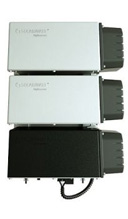 |
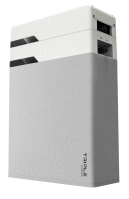 |
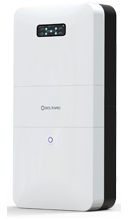 |
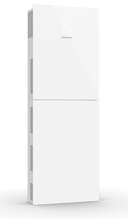 |
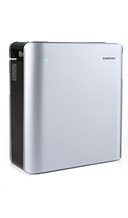 |
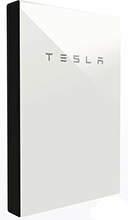 |
 |
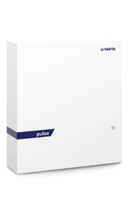 |
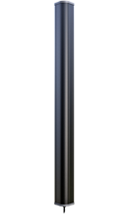 |
| In Depth Analysis | Not yet | Yes, review here. | Not yet. | Not yet. | Not yet. | Yes, review here | Yes, review here | Not yet. | Not yet. | Not yet. | Yes, review here | Not yet | Yes, review here. | Not yet. | Not yet. | Not yet. | Not yet. | Not yet. | Not yet. | Yes, On-grid and Off-grid. | Not yet. | Yes, review here. | Not yet. | Not yet | Not yet | Yes, review here. | Not yet. | Yes, review here. | Not yet. | Not yet |
Yes, review here. |
| Australian Approvals |  |
 
|
 |
 |
 
|
 
|
 
|
 
|
 
|
 
|
N/A | N/A |
 
|
N/A | N/A |
 
|
 
|
 
|
 |
N/A |  |
N/A | N/A |
 
|
 
|
 
|
 
|
 
|
N/A |
 
|
N/A |
| Battery Type | Lithium-ion (Lithium Iron Phosphate) | Lithium-ion (Lithium Iron Phosphate) | Lithium Ion (Nickel Cobalt Aluminium) | Lithium-ion (Lithium Iron Phosphate) | Lithium-Ion | Lithium-ion (Lithium Iron Phosphate) | Lithium Ion (Lithium Iron Phosphate) | Lithium Ion (NMC) | Lithium-ion (Lithium Iron Phosphate) | Lithium ion LiFePO4 | Lithium Ion | Lithium ion (Lithium ion phosphate) | Lithium-Ion (NMC) | Lithium Ion | Lithium-Ion (Lithium Iron Phosphate) | Lithium-ion (Lithium Iron Phosphate) | Lithium Ion (Lithium Iron Phosphate) | Lithium Ion (Lithium Iron Phosphate) | Lithium Ion (NMC – LG battery modules) |
Flow (Zinc-Bromide) | Lithium Ion (Lithium Iron Phosphate) | Lithium-ion (Lithium Iron Phosphate) | Lithium Ion | Lithium Ion (NMC) | Lithium Ion (Lithium Iron Phosphate) | Lithium-ion (Lithium Iron Phosphate) | Lithium Ion (NMC) | Lithium Ion (NMC) | Lithium Ion (Lithium Iron Phosphate) | Lithium-Ion (lithium-mananese-cobalt-oxide) | Lithium Ion (Lithium Titanate) |
| All In One Unit? | Yes | Yes | No | No | No | No | Yes (includes microinverter – requires 1 Envoy-S comms unit per install) | Yes | No | No | Yes | No | No | Yes | No | No | Yes | Yes | Yes | No | Yes | No | Kind of – requires batttery converter called Command | No | Yes | Kind of. Includes AC battery inverter but requires solar inverter. | No | Kind of. Includes AC battery inverter but requires solar inverter. | Kind of. Includes AC battery inverter ("Powerbox") but requires solar inverter. | Yes | No |
| Price excl. installation (Estimated Retail pricing in AUD incl. GST, unless stated otherwise) | $8341 | $9,042 | $7,000 | $9,600 | $7,000 | $10,000 | $2,000 (fully installed) | $14,500 | $3,300 | $4500 | $13,540 | $6,000 | $5,300 | $12,000 | $3,550 | $1,999 | $16,000 | $18,000 | $9,625 | $12,600 | $14,000 | $4,700 | $2,000 per module + battery converter | $2,800 | $6,990 | $16,500 | $3,500 | $13,300 (includes "Telsa Gateway") | $9,790 (includes $550 charge for extended Powerbox battery inverter warranty) | $7,000 – $7,200 | $3,000 |
| Nominal Storage | 4 kWh | 5.7 kWh | 6.8kWh | 13.8 kWh | 6kWh | 9.6kWh | 1.2kWh | 13kWh | 3kWh (per module) | 6.5 kWh | 10.8 kWh | 5 kWh | 6.5 kWh | 13 kWh | 3.3 kWh | 2.4kWh | 12kWh | 13.2kWh | 6.5kWh | 10 kWh | 10 kWh | 3.4kWh | 2.4kWh | 4.5kWh | 5kWh | 15kWh | 4.8 kWh | 14 kWh | 9.6kWh | 6.5 kWh | 1.93kWh |
| Usable Storage Capacity | 3.8 kWh | 5.5 kWh | 6.0kWh | 13.8 kWh | 5.6 kWh | 9.6kWh | 1.2kWh | 12.2kWh | 2.4kWh (per module) | 6 kWh | 9.72 kWh | 5 kWh | 5.9 kWh | 11.7 kWh | 2.64kWh | 2.16kWh | 10.8kWh | 11.9kWh | 5.2kWh | 10 kWh | 9 kWh | 3.4kWh (or 2.75kWh if you are cycling at 80% DoD as per warranty document) | 2.4kWh | 4.05kWh | 4.5kWh | 13.5kWh | 4.56 kWh | 13.5 kWh | 8.64kWh | 6 kWh | 1.93kWh |
| Pros | Modular (up to 12 kWh total) | Sleek modular design, IP65, UPS enabled | TBD | Units can be linked together in a parallel connection | Module made in Japan. Can be used in both off-grid and hybrid setups, modular expansion (up to 2 batteries per inverter). System, cell and cabinet have multiple safety features. | Can be used in both off-grid and hybrid setups, compact design, modular expansion | Simple installation, easy to add more batteries to increase storage capacity. | Modular, flexible, outdoor rated design for easy installation. Remote commissioning and troubleshooting with manufacturer support. Advanced auto-recovery controls avoid manual resets. Manufactured in South Australia. VPP-ready EMS | Modular and scalable. 10,000 cycles at 80% DoD. | Cheap. | All in one with Samsung batteries. Easy to install. | Modular - expandable | Can be used in both off-grid and hybrid setups, compact size, modular expansion. | Fast installation, Reposit ready, has backup capability if grid goes down, LG Chem battery technology inside, all DC and AC protection devices prewired | Self-managed and infinitely stackable. Rack mountable. | Safest Lithium Chemistry, Scalable, Integrated BMS, good cost-per-kWh | All in one solution from Qcells – solar inverter included | Inverter and BoS (Balance of System) – IP65 (outdoor rated); Battery Cabinet – IP54 (outdoor rated); Integrated back-up; Integrated DC isolator; Robust design; Expandable storage to size to customer needs; Australian design, Australian company; Monitoring platform and app included; All-in-one design ensures a clean install free from messy cables & conduit; Fast, safe and easy install | Made in Australia (battery cells from LG Chem), Expandable design, VPP ready, quick install. | Safe chemistry (low fire danger compared to lithium ion batteries), high depth-of-discharge, can tolerate temperatures up to 50 degrees C, easily recycleable, Australian owned & developed | All in one hybrid, provides “apocalypse proof” backup, can purchase 20 year extended warranty | American made, can be used in both off-grid and hybrid setups, compact size, modular expansion, 10 year warranty, very high cycle life, BMS integrated into each battery | German-made, 100% DOD, Modular, expandable up to 60 kWh, intelligent charging algorithm, easy to retrofit | Modular battery with scalability of capacity & charge/discharge power, higher charge & discharge power, Plug and play installation | DC & AC Coupled, Standalone, Wall Mountable, Expandable, Indoor or Outdoor, Low Noise | Made in Germany, long cycle life, great warranty | Simple setup for multiple batteries; One-click online firmware update; Robust BMS provides multi-protection at both cell level and system levell; Smart hibernation technology to maintain battery state of health; | Advanced safety features minimise fire risk, charges batteries from solar when grid is down, impressive warranty | Designed to be retrofitted to existing solar panel installations, scaleable | Ease of installation through "plug and play", German designed and manufactured. | 20 year warranty, low battery degradation over time, designed to handle multiple cycles per day. |
| Cons | TBD | TBD | TBD | TBD | Designed to work only with Delta's E5 inverter | TBD | Very low power output per battery | TBD | TBD | Cheap. | The system, apart from the batteries, only has a 5 year warranty. | Only compatible with Huawei inverters1 | Battery is warranted to 45ºC ambient | TBD | TBD | TBD | TBD | TBD | Backup power only 3kW | Heavy. Question mark over DC-DC roundtrip efficiency (~80%). Requires a maintenance cycle once a week or so that takes the battery offline for a few hours. | Expensive, low IP rating, lower power output compared to similar sized batteries | Relatively expensive | 5 year product warranty | Only compatible with SolaX inverters | TBD | Relatively low power output – max 3.3kW | Only compatible with the Sungrow SH5K hybrid inverter | TBD | $550 extra charge to apply the full 10 year warranty to the Powerbox battery inverter | Does not provide backup. | apply the full 10 year warranty to the Powerbox battery inverter. Expensive compared to other lithium technologies |
| Weight | 72 kg | 123kg including inverter | 62kg | 181 kg | 75kg | 113kg | 25kg | 168kg | 35kg | 57.5 kg | 239 kg | 63.8 kg | 52kg | 240kg | 41kg | 27kg per battery | 185kg | 130 kg | 130 kg | 290kg | 115 kg | 38 kg (per individual battery module) | 25kg | 56.6kg | 79kg | 200kg | 48kg | 125kg | 95kg | 65kg | 36kg |
| Power | 2 kW | 2.8kW nominal output | 3kW | 12.8kW | 3kW steady | 4.8kW | 260W per battery (stacks with each additional battery) | 5 kW steady, 6kW (30 minutes), 8.5kW (3 seconds). | 3kW | 4.2kW | 6.6 kW steady | 2.5 kW | 4.2kW steady, 4.6kW peak (for 3 seconds) | 4.6kW | 3.3kW | 2kW continuous per module (stacks with each additional module) | 4.6kW | 5kW | 5kW | 3kW steady, 5kW peak | 3 kW charge, 3.5 kW discharge | 1.5kW steady (48v version) 0.75kW stead (24v version) | 800W peak (per MyReserve unit) under continuous operation | 2.5kW | 5kW | 3.3kW | 3kW | 5kW steady, 7kW peak (10 seconds) | 3kW steady | 2.5 kW | 2.4kW |
| Dimensions (WHD) | 740 mm x 490 mm x 229 mm (inverter) 740 mm x 490 mm x 229 mm (battery unit) | 120cm x 60cm x 25cm | 52cm x 67cm x 23cm | 65 cm x 80 cm x 55cm | 552 x 596 x 200 mm | 92cm x 55cm x 21cm | 39cm x 32.5cm x 22cm | 110cm x 78cm x 40cm | 42cm x 88cm x 57cm | 47.5cm x 76.5cm x 14.5cm | 140 cm x 28 cm x 120 cm | 670 x 150 x 600 mm | 45cm x 65cm x 12cm | 75cm x 155cm x 41cm | 43cm x 88cm x 62cm | 44cm x 9cm x 41cm | 46cm x 72cm x 21cm | 51.6cm x 203.8cm x 20cm | 104 cm x 97 cm 54 cm | 50cm x 115 cm x 100cm | 117 cm x 53cm x 40cm | 34 cm x 35 cm x 20 cm | 38.4cm x 20.05cm x 27.7cm (per Myreserve unit) | 46.4cm x 19.3cm x 58.8cm | 75cm x 155cm x 41cm | 67cm x 186cm x 23cm | 51 cm x 56 cm x 19 cm | 115 cm x 75 cm x 15cm | 60cm x 100cm x 21cm | 60cm x 69cm x 19cm | 160cm x 15cm x 14cm |
| Round Trip Efficiency | TBD | 92% | TBD | ≥95.5% | 96% | TBD | 96% | >90% AC->AC | 96% | TBD | 90% | TBD | 95% | 95% | >96% | TBC | 95% | 90% Typical | TBD | 80% | TBD | 98% | 92% | 95% | 95% | 95% | 95% | 90% | 94% | TBD | 96% |
| Off-grid Capable? | TBD | Temporary off-grid available | TBD | Yes | Yes | Yes | No | Yes | Yes | TBD | Yes | TBD | Yes | Yes, Emergency Power Supply for backup up to 4kW | Yes | EPS capable with SolaX Power inverters | TBD | No | No | Yes | Yes | Yes | No | No | Yes | TBD | Yes | Yes | TBD | No | Yes |
| Designed for indoor or outdoor installation? (IP rating) | Indoor (IP 54) | Outdoor (IP65) | Indoor/Outdoor (IP65) | Indoor (IP 20) | Indoor/outdoor (IP 55) | Indoor/outdoor (IP 65) | Indoor (IP 20) | Indoor/outdoor (IP34) | Indoor (IP 50) | Indoor/Outdoor (IP 55) | Indoor (IP 54) | Indoor/outdoor (IP 66) | Indoor/Outdoor (IP 55) | Indoor/Outdoor (IP54) | Indoor (IP40) | Indoor (IP 20) | Indoor/Outdoor (IP65) | Inverter and BoS (Balance of System) – IP65; Battery Cabinet – IP54 | Indoor/Outdoor IP43 | Can be installed indoors, but outdoor installation is recommended (IP 43) | Indoor (IP 30) | Indoor (IP 32) | Indoor/Outdoor (IP54) | IP55 Outdoor | Indoor/Outdoor (IP65) | Indoor (IP 30) | Indoor/outdoor (IP 55) | Indoor/Outdoor (IP 67 for battery and electronics, IP56 for wiring) | Indoor/Outdoor (IP 54) | Indoor (IP33) | Indoor/Outdoor (IP 65) |
| Operating temperature range | -20 +55°C | 0~40 (0.5C) | -10°C to 45°C | -10 °C to +50°C | -10 ~ 45 ℃ | -20°C to 50°C | -20ºC to 45ºC | -10ºC to 45ºC | 0°C to 55°C | -10°C~+45°C | -10°C – 45˚C | -10℃~ + 55℃ | -10°C to 45°C | -10°C to 45°C | Charge 0°C to 55°C / Discharge -20°C to 60°C | 0°C to 50°C | -10°C to 40°C | 0°C-45°C | 0°C-45°C | 10°C to 50 °C | 5°C to 40 °C | 0° to 49°C | 0°C to 45°C | -15°C to 55°C | -20°C to 55°C | -5°C to 45 °C | -10°C to 45°C | -20°C to 50°C | -10°C to 50°C | 5°C to 45°C | -40°C to 60°C |
| Warranty | 10 years | 5 years product warranty, 10 years performance warranty | 5+5 years | 10 years | 10 years | 10 years | warranty, 10 years performance warranty 10 years | 10 years | 10 years | 10 years | 5 year full warranty, 10 year battery performance warranty | 10 years | 60% capacity at 10 years or 20,000 kWh throughput whichever comes first | 5 year inverter warranty, 10 year battery performance warranty | 10 years | 7 years product warranty | 10 years | 5 years | 10 years | Warranted total energy throughput 36.5MWh or a maximum of 10 years, whichever comes first. | 10 years, can pay to extend to 20 | 10 years | 5 year product warranty, 10 year battery performance warranty | 10 years | 5 + 5 years | 10 years or 10,000 cycles, whichever comes first | 10 years | 10 years | 10 years | 7 years (inverter), 10 years (battery) | 20 years |
| Compatible with what hybrid inverter brands? (Non-All In One units only) | N/A | N/A | TBD | SMA, Goodwe, Victron, Sungrow, Selectronic, Solis | Delta inverters only | Goodwe, Victron, Imeon, Solis, Growatt | N/A | N/A | Any inverter brand that handles lead acid battery with the the right charging parameter to suit the self managed lithium module. | TBD | N/A | Huawei | SolaX, SunGrow, Redback, Goodwe, Ingeteam, Selectronic, SMA | N/A | Any brand that can handle charging self managed lithium ion batteries (Selectronic, Victron, SMA SI, Outback, Schneider, Studer, etc) | SolaX, Goodwe, Imeon, Selectronic, Redback, Sungrow | N/A | N/A | N/A | Victron, Goodwe, Selectronic, Redback, Telco | N/A | Any inverter than can handle 48 volt lithium batteries. (Less powerful 24 volt version also available.) | Most grid connect inverters | SolaX only | NA | N/A | Sungrow | TBD | Trina's PowerCube battery inverter only | N/A | Victron, Goodwe, Sungrow, Schneider |
| AC or DC coupled? (All In One systems only) | Can be AC or DC coupled | AC/DC/Hybrid coupling available | N/A | N/A | N/A | N/A | AC coupled | AC coupled | N/A | N/A | DC coupled | N/A | N/A | DC Coupled, can turn to AC Coupled using Reposit | N/A | N/A | TBD |
DC coupled and AC coupled |
DC coupled | N/A |
DC coupled and AC coupled |
N/A | DC coupled | N/A |
DC coupled and AC coupled |
AC coupled or DC Coupled with 3-phase hybrid variant | N/A | AC coupled | AC coupled | AC coupled | N/A |
| Total warranted kWh (1 cycle per day) | 13,870 | 10,037 | 10,950 | 43,400 | 12,600 | 35,040 | 4,161 | 38,400 | 8,212.5 | 21,900 | 34,300 | 16,450 | 16,100 | 40,000 | 9636 | 4,500 | 39,420 | Depending on battery type and manufacturer | 18,980 | 36,500 | 32,850 | 11,177 | 4,380 | 14,782 | 8,212 | 49,275 | TBD | 37,800 (assuming most people will want to use 'other applications' such as off peak charging and Reposit) | 22,450 | 14,946 | 14,089 |
| Datasheet Supplied? | Yes | Yes | Yes | Yes | Yes | Yes | Yes | Yes | Yes | Yes | Yes | Yes | Yes | Yes | Yes | Yes | Yes | Yes | Yes | Yes | Yes | Yes | Yes | Yes | Yes | Yes | Yes | Yes | Yes | Yes | |
| Warranty Supplied? | Yes | Yes | Yes | Yes | Yes | Yes | Yes | Yes | Yes | Yes | Yes | Yes | Yes | Yes | Yes | Yes | Yes | Yes | Yes | Yes | Yes | Yes | Yes | Yes | Yes | Yes | Yes | Yes | Yes | Yes | |
| Cost per Total Warranted kWh (1 cycle per day) | $0.60 | $0.90 | $0.64 | $0.22 (+ inverter cost) | $0.55 (+ inverter cost) | $0.29 | $0.48 | $0.37 | $0.42 (+ inverter cost) | $0.21 | $0.74 | $0.35 | $0.30 (+ inverter cost) | $0.30 | $0.37 (+ inverter cost) | $0.44 (+ inverter cost) | $0.41 | TBD | $0.51 | $0.35 (+ inverter cost) | $0.43 | $0.42 (+ inverter cost) | $0.46 (+ battery converter cost) | $0.19 (+ inverter cost) | $0.85 | $0.34 | TBD | $0.31 (+ inverter cost) | $0.31 (+ inverter cost) | $0.48 | $0.21 (+ inverter cost) |
| More information on brand | Here | Here | Here | Here | Here | Here | Here | Here | Here | Here | Here | Here | Here | Here | Here | Here | Here | Here | Here | Here | Here | Here | Here | Here | Here | Here | Here | Here | Here | Here | Here |
Cost per warranted kWh 1 cycle per day
If the battery is cycled once per day, this is how much each warranted kilowatt-hour of stored electricity will cost. Once an individual product’s price per kilowatt-hour drops below 10 cents, battery storage is likely to be a worthwhile investment for a large number of households. This graph scrolls left to right – try it to see the really expensive units…
Cost per Total Warranted kWh (1 cycle per day)
- 1.50
- 1.35
- 1.20
- 1.05
- 0.90
- 0.75
- 0.60
- 0.45
- 0.30
- 0.15
- 0.00
- $0.19
- $0.19
- $0.21
- $0.21
- $0.22
- $0.22
- $0.26
- $0.26
- $0.28
- $0.28
- $0.29
- $0.30
- $0.30
- $0.30
- $0.31
- $0.31
- $0.34
- $0.35
- $0.35
- $0.35
- $0.37
- $0.37
- $0.37
- $0.41
- $0.42
- $0.42
- $0.43
- $0.44
- $0.46
- $0.46
- $0.48
- $0.48
- $0.48
- $0.49
- $0.51
- $0.55
- $0.55
- $0.57
- $0.58
- $0.58
- $0.60
- $0.61
- $0.64
- $0.67
- $0.67
- $0.70
- $0.74
- $0.85
- $0.90
- $1.07
- SolaX Triple Power 6.3
- SolaX Triple Power 4.5
- Growatt GBLI6531
- Zenaji Aeon
- BYD B Box Pro 13.8
- LG Chem RESU 13
- Huawei Luna (15 kWh)
- Huawei Luna (10 kWh)
- LG Chem RESU 10
- BYD Battery Box LVS 12 kWh
- Dyness Powerbox
- Opal Storage
- BYD Battery Box LVS 8 kWh
- LG Chem RESU 6.5
- Tesla Powerwall 2
- Trinabess Powercube
- Sonnenbatterie Eco 9.43
- Redflow Zcell
- BYD Battery Box LVS 4 kWh
- Huawei Luna (5 kWh)
- RedEarth Sunrise 13kWh
- Eguana Evolve
- PowerPlus Energy LiFe Premium Series
- QCells Q.HOME
- GenZ 48V 3kWh
- SimpliPhi PHI3.4 Smart-Tech battery
- Senec.HOME V3 Hybrid
- Pylontech US2000B
- SolarWatt MyReserve Matrix
- ABB (Fimer) REACT 2 (12 kWh)
- Enphase AC Battery
- VARTA Pulse 6
- LG Chem RESU HV 10
- ABB (Fimer) REACT 2 (8 kWh)
- RedEarth Sunrise 6.5kWh
- Soltaro AIO2 5kW / 30kWh
- Delta BX 6.0
- Alpha-ESS Storion SMILE 5 -16.5kWh
- Soltaro AIO2 5kW / 20kWh
- LG Chem RESU HV 7
- ABB (Fimer) REACT 2 (4 kWh)
- Soltaro AIO2 5kW / 3 x 5kWh
- Aoboet UHOME NCA
- Soltaro AIO2 5kW / 10kWh
- Soltaro AIO2 5kW / 2 x 5kWh
- Alpha-ESS Storion SMILE 5 -11kWh
- Hansol AIO 10.8
- Soltaro AIO2 5kW / 5kWh
- Alpha-ESS Storion SMILE 5 – 5.5kWh
- Hansol AIO 7.2
- = Just battery (requires extra expense on battery inverter and solar inverter)
- = All In One unit
- = Battery + battery inverter (Extra cost for solar inverter)
We update this comparison table frequently as more business and home energy storage systems become available, and specs and prices of existing solar batteries change.
Please note system pricing is our best estimate of retail prices inclusive of GST, unless specifically noted otherwise. But it is only an estimated cost.
Please read the following if you are not 100% certain what a kWh is, or the difference between a kW (kilowatt) and a kWh (kilowatt-hour): What does kWh stand for?. It’s important to be clear on this.
Usable Storage Capacity (kWh)
The energy stored in a solar battery system that can actually be used. In most cases this is less than the nominal storage capacity figure provided.
For example, the Enphase AC battery has a total storage capacity of 1.2kWh. But as only 95% of that stored energy can be discharged (aka a 95% Depth Of Discharge) the battery’s usable storage capacity is really 1.1kWh.
Battery Power (kW)
A solar battery’s power is how fast it can be charged or discharged.
For example, an Enphase AC battery is a low power solar battery storage system (also known as an ‘energy’ battery) because it takes 4 hours and 23 minutes to discharge all its usable energy, while the BMZ ESS is a high power battery because it can discharge all its usable energy in under 40 minutes.
A high power home battery system isn’t necessarily more desirable than a low power battery – your household’s unique energy usage needs will determine how much power you will require from a solar battery and the best energy storage solution for you.
All In One Unit
This means the system includes batteries, a battery management system (BMS) and an inverter. The Sunverge SIS is one example of an all-in-one home energy storage system.
If a battery management system and/or inverter have to be purchased separately, this will add to the total cost of the system.
Warranty Document Supplied?
Links to a warranty document if it is available. Don’t buy a solar battery system until you have read the latest version of its warranty document sourced direct from the supplier. They change often and we can’t guarantee the linked version we provide above is the latest.
Total Warranted kWh (1 Cycle Per Day)
If you only discharge the battery once per day (most likely for larger solar batteries in residential situations), then the warranty period may expire well before the warranted kWh are all used up.
The number of kilowatt-hours (kWh) a home battery system can discharge per day is multiplied by the number of days in the warranty period in order to generate the figures for this row.
Cost Per Warranted kWh (1 Cycle Per Day)
This is the solar battery price (excluding installation) divided by ‘Warranted kWh (1 cycle per day)’. If you discharge the battery approximately once per day, this number indicates what energy storage system may be the most cost-effective in your circumstances.
A Note On Battery Warranties
Some solar batteries in the table have different warranties for components within the unit. For example, some “all in one” battery storage systems warrant the batteries for 10 years but the internal inverter only has a warranty of 5 years.
We use the ‘weakest link’ warranted figure (so in the above example, 5 years instead of 10 years) when calculating the cost per warranted kWh.
Disclaimer: Although we strive to review the information in this comparison table regularly to keep it up to date and accurate, mistakes may be made and prices and other figures/specifications can go out of date quickly. Check with battery manufacturers before making any solar storage purchase decisions based on information provided in this table.
NEW! – Try our solar battery calculator – see what your electricity bills could be and whether batteries are the right choice for your home.
NEW! – Find out more about the manufacturers listed in the table above and what Australians think about their batteries in our solar battery storage reviews pages – more than 40 companies listed!
